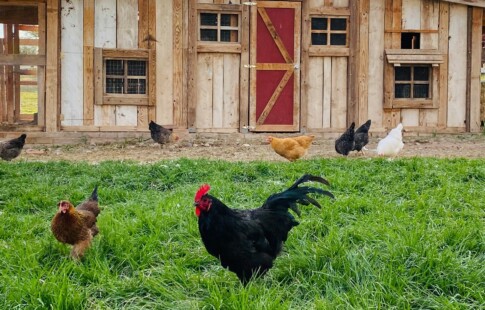
4 Top Alternative Agriculture Methods You Should Be Aware Of
We are reader-supported. When you buy through links on our site, we may earn affiliate commission.
Agriculture or farming is something that might sound like it can only be accomplished on a massive industrial scale, but everyone can enjoy the benefits of growing their own food or raising their own livestock. However for small-scale efforts, traditional agricultural methods aren’t going to be the best option. With that in mind, here are the top alternative agriculture methods you should be aware of.
1. Organic Farming
The organic farming movement helps to prevent water pollution and other environmental damage while increasing yields. Some studies have shown that corn plants, grown organically, can produce up to 30% more corn than when grown traditionally. Not only are you getting more from your crop, but you’re accomplishing the same task without jeopardizing your local environment. Focus on truly organic farming methods rather than those that claim to be organic but rely on dangerous chemicals. Many of the organic pesticides, such as pyrethrins, which are derived from dried chrysanthemum flowers, are just as toxic as the non-organic chemicals — and sometimes even more so.
2. Crop Rotation
Ancient farmers had a lot of good ideas. They didn’t have the kind of tools and chemicals we have available to us today, so if a field started to perform poorly, they didn’t have the option to go to their local farm store for nitrogen or potassium supplements to improve soil nutrition. Instead, they used a process known as crop rotation. In the same field, they would grow different types of crops in a specially designed sequence to provide maximum yield while still improving or maintaining soil fertility. Crop rotation relies on three different types of crops — cash, filler and cover. Your cash crops are the ones you’re going to be making money off of or eating yourself. Filler crops keep the field from going fallow during the off-season while often contributing to soil health and fertility, and cover crops do the same without requiring much monitoring or maintenance.
3. Regenerative Farming
Regenerative farming is another old concept that takes the idea of crop rotation to a whole nother level. Instead of treating the soil like a tool to be used and discarded, regenerative farming techniques treat agriculture like it’s part of the land rather than something separate from it. In addition to things like crop rotation, regenerative farming minimizes tilling to preserve soil aggregation, relies on natural fertilizers like compost and manure rather than chemical alternatives and takes all necessary steps to prevent the farming from decimating the local ecosystem.
These techniques can even be applied to raising livestock. Instead of letting livestock — especially large ones like cows or horses — graze as they please, farmers can employ better grazing practices to keep the animals from wiping out local plant life. Livestock can be a fantastic source of natural fertilizers, which is why they’re a popular addition to regenerative farms, but they can also cause a lot of damage if they’re not properly controlled.
4. Integrated Pest Management (IPM)
Pests are part of agriculture, but modern methods of dealing with them tend to be dangerous. Treatments tend to rely on blanket applications of toxic chemicals. Many of these applications leave residue on the food grown in those fields. Integrated pest management, or IPM, is an alternative agriculture method designed to help farmers manage pests effectively while remaining sensitive to the impact that these decisions have on the environment. Instead of relying on a one-size-fits-all approach, IPM acts based on a set of tiers. IPM makes evaluations and decisions based on the exact details of the situation.
Most IPM growers use a four-tiered approach. They start by setting action thresholds — deciding when action needs to be taken. This doesn’t usually mean action is needed when the first pest is found, though. Instead, growers will take the time to monitor and identify the pests in their field. Not everything needs to be removed from the field. The next step is prevention, which is often more effective than treatment after the fact. Control is the last step and is used if the previous methods don’t work anymore.
The Future of Agriculture
Traditional agriculture techniques might be effective for the time being, but in the long run, they’re not sustainable. Relying on harsh chemicals to manage pests and using artificial supplements rather than natural fertilizers will leave us with barren fields we aren’t able to maintain. Many of the alternative agriculture methods are things that our ancestors knew and lived by. We’ve forgotten them following the advent of farming technology. Going into the future, we need to take a step back, look at the past and take the time to relearn the things we’ve forgotten, especially as they apply to sustainable agriculture.
Share on
Like what you read? Join other Environment.co readers!
Get the latest updates on our planet by subscribing to the Environment.co newsletter!
About the author
Jane Marsh
Starting from an early age, Jane Marsh loved all animals and became a budding environmentalist. Now, Jane works as the Editor-in-Chief of Environment.co where she covers topics related to climate policy, renewable energy, the food industry, and more.





